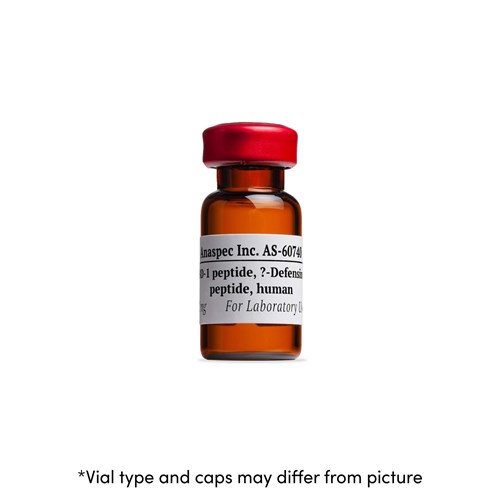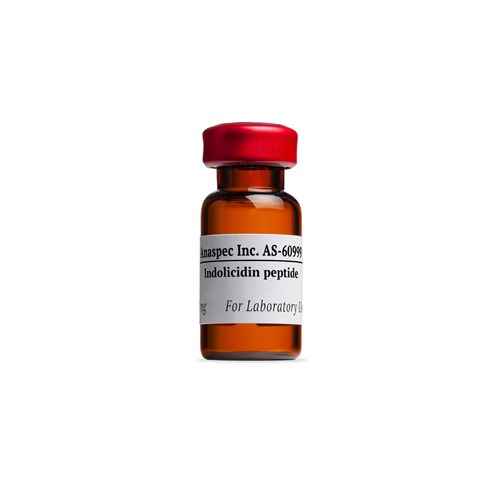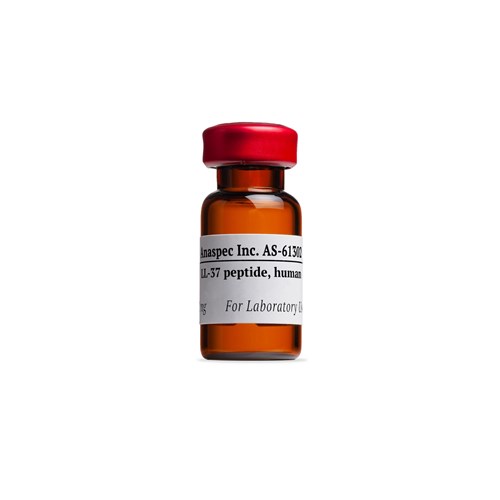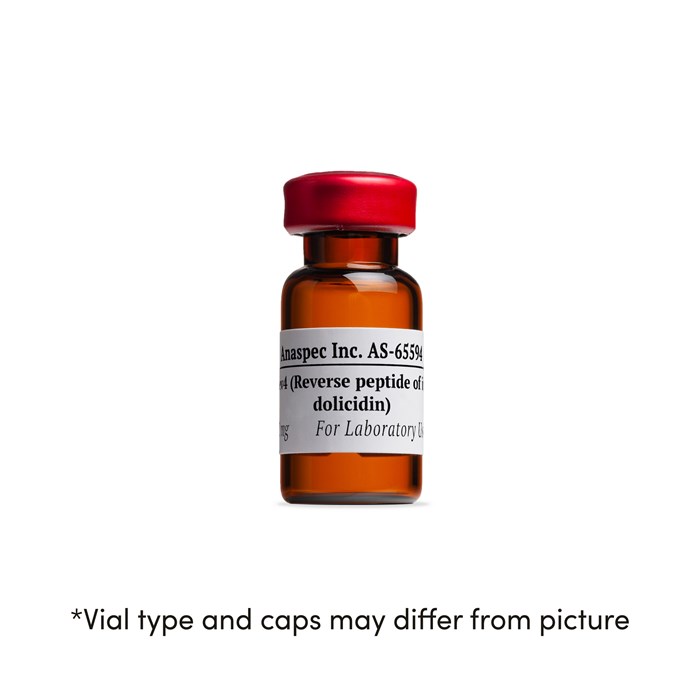Rev4
- Cat.Number : AS-65594
- Manufacturer Ref. :
-
Availability :
In stock
Reverse peptide of indolicidin (Rev4) is a 13-amino acid residue peptide based on the sequence of indolicidin. Indolicidin, a member of the cathelicidin protein family, is a 13-amino acid residue cationic, antimicrobial peptide-amide isolated from the cytoplasmic granules of bovine neutrophils. The synthetic peptide Rev4 has been shown to possess strong antimicrobial as well as protease inhibitory activities in vitro.
Specifications
| Chemistry | |
| Sequence one letter code |
|
|---|---|
| Sequence three letter code |
|
| Molecular Formula |
|
| Molecular Mass/ Weight |
|
| Modification | |
| Conjugation |
|
| Quantity & Purity | |
| Purity |
|
| Storage & stability | |
| Form |
|
| Storage Conditions |
|
| Activity | |
| Biomarker Target | |
| Research Area | |
| Sub-category Research Area | |
| Usage |
|
| Source | |
| Source / Species |
|
You may also be interested in the following product(s)



References
A tridecapeptide possesses both antimicrobial and protease-inhibitory activities
Peptides . 2002 Jan 01 ; 23(1) 1 | DOI : https://doi.org/10.1016/S0196-9781(01)00572-1
- Q. Li
- et al
Formation and Characterization of a Single Trp-Trp Cross-link in Indolicidin That Confers Protease Stability without Altering Antimicrobial Activity
J Biol Chem . 2000 Apr 01 ; 275(16) 12017 | DOI : https://doi.org/10.1074/jbc.275.16.12017
- K. Ösapay
- et al
Increased pathogen resistance and yield in transgenic plants expressing combinations of the modified antimicrobial peptides based on indolicidin and magainin
Planta . 2005 Nov 24 ; 223(5) 1024 | DOI : 10.1007/s00425-005-0143-6
- H. Xing
- et al

